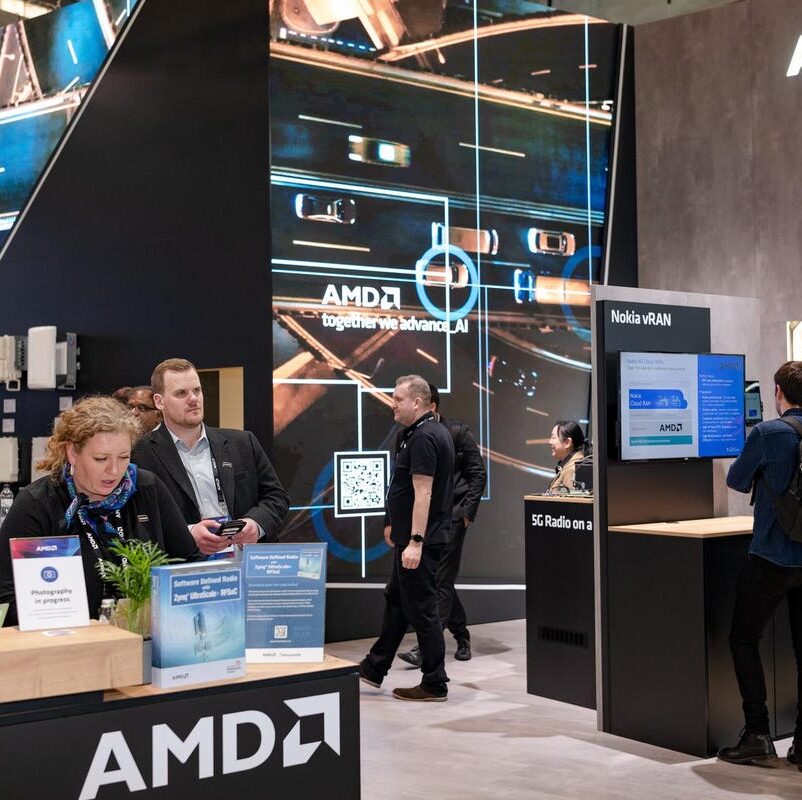
Visitors walk at the AMD during the Mobile World Congress 2023 (MWC), the telecom industry’s biggest … [+]
Updated 01 March 2023 to include AMD-Nokia Collaboration video recorded on the MWC show floor
Almost exactly one year after AMD completed its acquisition of Xilinx, AMD, and frankly the industry, is starting to reap the benefits of the combined company. The mobile industry has fully mobilized (pun intended) at this year’s Mobile World Congress (MWC) in Barcelona with a resurgence of major announcements around the show and AMD is no exception. Coming off a relatively strong 2022 in terms of revenues as well as product launches, AMD is looking to keep the momentum building as we kick off 2023. In January, at CES in Las Vegas, the company focused on gaming solutions with its Ryzen launches, which included some artificial intelligence solutions from Xilinx. A month later at MWC, AMD has announced new developments around its 5G infrastructure portfolio. For 5G radio units (RUs), AMD announced two Zynq Gen 4 RFSoCs (or Radio Frequency Systems on Chip), the ZU63DR and ZU64DR. For the 5G core, AMD announced an expanded collaboration with Nokia using the latest set of 4th Gen Epyc CPUs to help deliver the aggressive energy efficiency that service providers are looking for in their Cloud RAN solutions.
With support for 4X4 and 8X8 MIMO (multiple-input, multiple-output) antenna arrays and full digital front ends, the new Zynq RFSoCs target the full RU range from small cells to massive MIMO configurations, and in the case of the ZU63DR, dual-band, entry level O-RAN radio unit applications. AMD expects to release both parts to production in May 2023.
To help deliver on its partnership goals with Nokia, AMD’s Epyc CPUs offer a SKU stack that scales from 8 to 96 cores with support for as much as 6TB of RAM per socket, 128 PCIe Gen 5 lanes, and 12 memory channels per CPU. A recent comparison performed by AMD against a leading competitor claims that data centers using these CPUs will need 35% fewer servers and sockets and consume 29% less power per year. Also according to the comparison by AMD, this saves carbon emissions equal to the carbon dioxide removed by 38 acres of US forest annually.
With these announcements, as well as a full showcase of demos at the show with various partners, AMD is touting its 5G telco market leadership and they’re making a strong argument for it. Adding the Epyc products to its portfolio of Xilinx infrastructure families from Zynq to Versal, Virtex and Alveo processors and accelerators is allowing AMD to fully address all nodes in the entire 5G infrastructure market, from the RUs through the distributed units, the centralized unit, the 5G core, and even through to the metro/transport and converged access nodes.
It is still early in 2023 and success for AMD will depend on executing on these announcements and other strategic initiatives. However, if recent performance is any indication, Dr. Lisa Su and company are definitely building off their strong 2022 results and looking to deliver some knock out punches in 2023.


